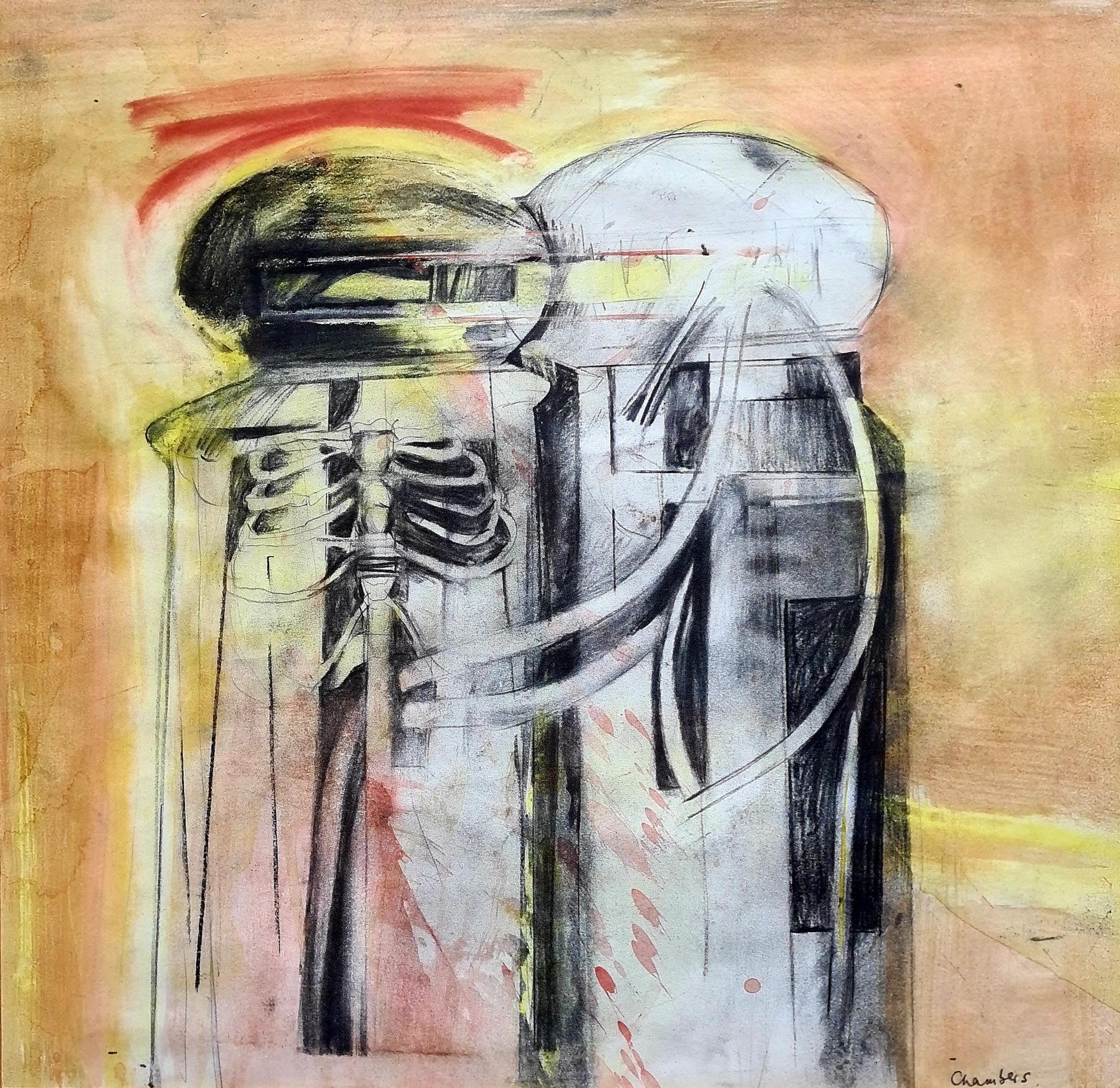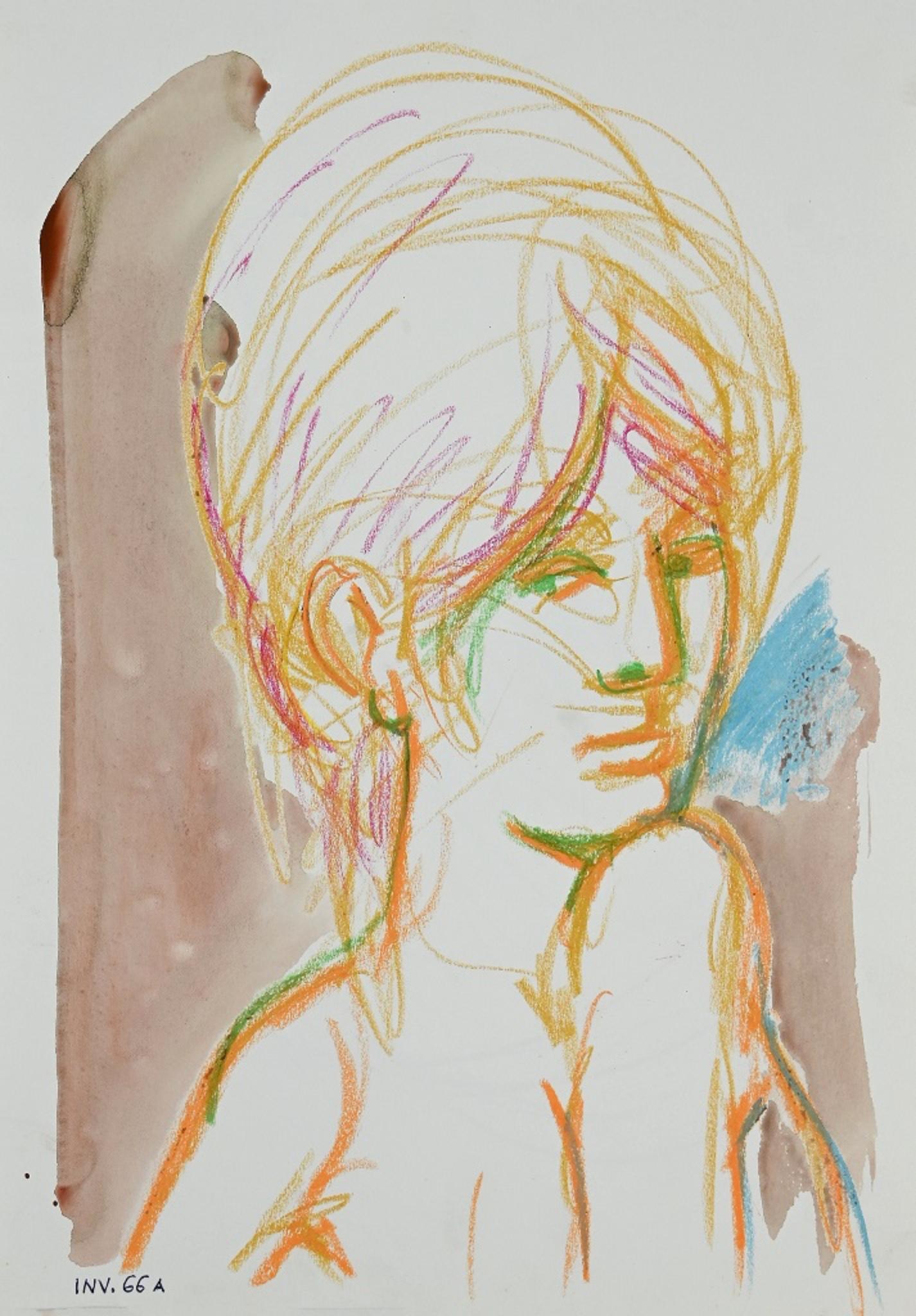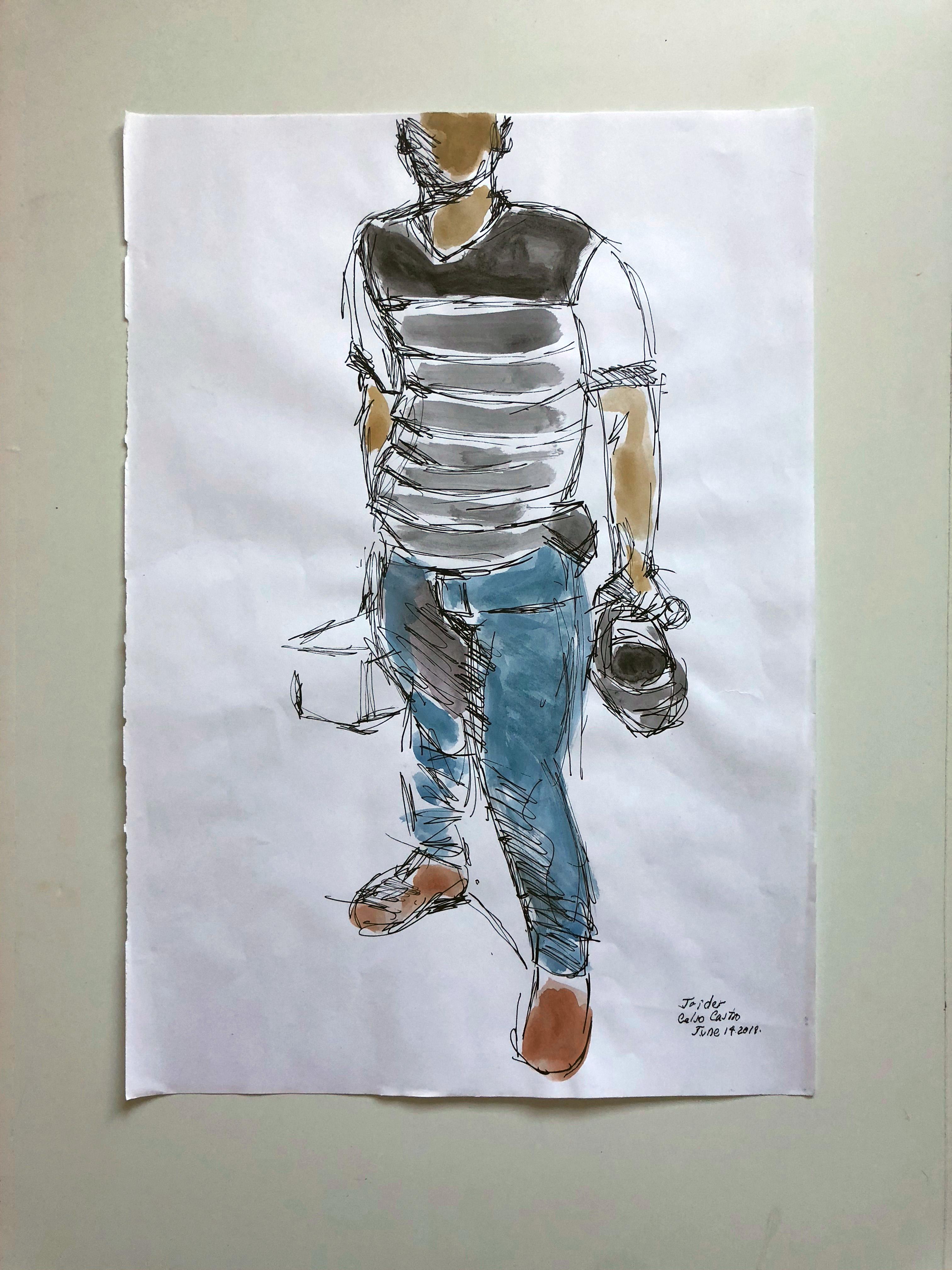Items Similar to Woman with Dog, Saturday Evening Post Cover
Want more images or videos?
Request additional images or videos from the seller
1 of 7
Thomas Webb 1Woman with Dog, Saturday Evening Post Cover1937
1937
About the Item
Medium: Pastel and Watercolor
Signature: Signed Lower Right
Saturday Evening Post Cover, March 13th, 1937.
- Creator:Thomas Webb 1
- Creation Year:1937
- Dimensions:Height: 22.5 in (57.15 cm)Width: 16.75 in (42.55 cm)
- Medium:
- Period:
- Condition:
- Gallery Location:Fort Washington, PA
- Reference Number:1stDibs: LU38436865112
About the Seller
5.0
Recognized Seller
These prestigious sellers are industry leaders and represent the highest echelon for item quality and design.
Gold Seller
These expertly vetted sellers are highly rated and consistently exceed customer expectations.
Established in 1995
1stDibs seller since 2016
107 sales on 1stDibs
Typical response time: 5 hours
- ShippingRetrieving quote...Ships From: Fort Washington, PA
- Return PolicyA return for this item may be initiated within 14 days of delivery.
More From This SellerView All
- Girl with BraidsBy Wladyslaw T. BendaLocated in Fort Washington, PAMedium: Charcoal, Pastel, and Watercolor on Board Signature: Signed Lower Right Sight Size 18.75" x 15.25;" Framed 27.50" x 15.25" circa 1920 Girl with Braids...Category
1920s Portrait Drawings and Watercolors
MaterialsPastel, Charcoal, Watercolor, Board
- First Mate, Saturday Evening Post CoverBy Bradshaw CrandellLocated in Fort Washington, PADate: 1928 Medium: Pastel on Paper Dimensions: 25.00" x 20.00" Signature: Signed Lower Right Cover of The Saturday Evening Post, July 7 1928Category
1920s Portrait Drawings and Watercolors
MaterialsPaper, Pastel
- Marilyn UnzippedLocated in Fort Washington, PAMedium: Charcoal, White Pastel on Canson MiTientes Paper Signature: Signed Lower Right Dimensions: 25.00" x 19.00" UnframedCategory
20th Century Portrait Drawings and Watercolors
MaterialsCharcoal, Paper, Pastel
- Marilyn - Like No OtherLocated in Fort Washington, PAMedium: Charcoal and White Pastel on Canson Mitientes Pape Signature: Signed Lower Right Dimensions: 16.50" x 14.00," UnframedCategory
20th Century Portrait Drawings and Watercolors
MaterialsPaper, Charcoal, Pastel
- My Best GirlBy Jules ErbitLocated in Fort Washington, PAMedium: Pastel on Board Dimensions: 26.50" x 18.50" Signature: Signed Middle Right Date: 1949Category
1940s Portrait Drawings and Watercolors
MaterialsPastel, Board
- Woman in the GardenBy Stuart TravisLocated in Fort Washington, PADate: 1907-1910 Medium: Pastel on Board Dimensions: 22.00" x 28.00" Signature: Signed Lower Right Stuart Travis did many early Vogue magazine covers. Signed with an address on ...Category
1910s Portrait Drawings and Watercolors
MaterialsBoard, Pastel
You May Also Like
- Portraits of the Hon. Mary Shuttleworth and Anna Maria, 9th Baroness ForresterBy Daniel GardnerLocated in London, GBTHE HON. MARY SHUTTLEWORTH, NÉE COCKBURN (D. 1777) and her sister ANNA MARIA, 9TH BARONESS FORRESTER (D. 1808) Pastel and gouache on paper laid on canvas, on their original backb...Category
18th Century Old Masters Portrait Drawings and Watercolors
MaterialsGouache, Pastel
- Ex Machina, Nicaragua Solidarity CampaignLocated in Cotignac, FRA late 20th Century watercolour and pastel drawing of machines in a landscape by British artist Paul Chambers. The painting is signed bottom right and carries an exhibition label for...Category
Late 20th Century Contemporary Figurative Drawings and Watercolors
MaterialsPaper, Pastel, Watercolor, Gouache
- Female Portrait- Original Pastel and Watercolor - 1960sBy Leo GuidaLocated in Roma, ITFemale Portrait is an original Contemporary Artwork realized in the half of the 20th Century. Original mixed media, pastel and watercolor on paper. The back of the sheet is also a ...Category
1950s Contemporary Portrait Drawings and Watercolors
MaterialsWatercolor, Pastel
- Rare Modernist Hungarian Rabbi Pastel Drawing Gouache Painting Judaica Art DecoBy Hugó ScheiberLocated in Surfside, FLRabbi in the synagogue at prayer wearing tallit and tefillin. Hugó Scheiber (born 29 September 1873 in Budapest – died there 7 March 1950) was a Hungarian modernist painter. Hugo Scheiber was brought from Budapest to Vienna at the age of eight where his father worked as a sign painter for the Prater Theater. At fifteen, he returned with his family to Budapest and began working during the day to help support them and attending painting classes at the School of Design in the evening, where Henrik Papp was one of his teachers. He completed his studies in 1900. His work was at first in a post-Impressionistic style but from 1910 onward showed his increasing interest in German Expressionism and Futurism. This made it of little interest to the conservative Hungarian art establishment. However, in 1915 he met the great Italian avant-gardist Filippo Tommaso Marinetti and the two painters became close friends. Marinetti invited him to join the Futurist Movement. The uniquely modernist style that he developed was, however, closer to German Expressionism than to Futurism and eventually drifted toward an international art deco manner similar to Erté's. In 1919, he and his friend Béla Kádar held an exhibition at the Hevesy Salon in Vienna. It was a great success and at last caused the Budapest Art Museum to acquire some of Scheiber's drawings. Encouraged, Scheiber came back to live in Vienna in 1920. A turning point in Scheiber's career came a year later, when Herwarth Walden, founder of Germany's leading avant-garde periodical, Der Sturm, and of the Sturm Gallery in Berlin, became interested in Scheiber's work. Scheiber moved to Berlin in 1922, and his paintings soon appeared regularly in Walden's magazine and elsewhere. Exhibitions of his work followed in London, Rome, La Paz, and New York. Scheiber's move to Germany coincided with a significant exodus of Hungarian artists to Berlin, including Laszlo Moholy-Nagy and Sandor Bortnyik. There had been a major split in ideology among the Hungarian avant-garde. The Constructivist and leader of the Hungarian avantgarde, Lajos Kassák (painted by Hugó Scheiber in 1930) believed that art should relate to all the needs of contemporary humankind. Thus he refused to compromise the purity of his style to reflect the demands of either the ruling class or socialists and communists. The other camp believed that an artist should be a figurehead for social and political change. The fall out and factions that resulted from this politicisation resulted in most of the Hungarian avant gardists leaving Vienna for Berlin. Hungarian émigrés made up one of the largest minority groups in the German capital and the influx of their painters had a significant effect on Hungarian and international art. Another turning point of Scheiber's career came in 1926, with the New York exhibition of the Société Anonyme, organized by Katherine Dreier. Scheiber and other important avant garde artists from more than twenty-three countries were represented. In 1933, Scheiber was invited by Marinetti to participate in the great meeting of the Futurists held in Rome in late April 1933, Mostra Nazionale d’Arte Futurista where he was received with great enthusiasm. Gradually, the Hungarian artists began to return home, particularly with the rise of Nazism in Germany. Kádar went back from Berlin in about 1932 and Scheiber followed in 1934. He was then at the peak of his powers and had a special flair in depicting café and cabaret life in vivid colors, sturdily abstracted forms and spontaneous brush strokes. Scheiber depicted cosmopolitan modern life using stylized shapes and expressive colors. His preferred subjects were cabaret and street scenes, jazz musicians, flappers, and a series of self-portraits (usually with a cigar). his principal media being gouache and oil. He was a member of the prestigious New Society of Artists (KUT—Képzőművészek Új Társasága)and seems to have weathered Hungary's post–World War II transition to state-communism without difficulty. He continued to be well regarded, eventually even receiving the posthumous honor of having one of his images used for a Russian Soviet postage stamp (see image above). Hugó Scheiber died in Budapest in 1950. Paintings by Hugó Scheiber form part of permanent museum collections in Budapest (Hungarian National Museum), Pecs (Jannus Pannonius Museum), Vienna, New York, Bern and elsewhere. His work has also been shown in many important exhibitions, including: "The Nell Walden Collection," Kunsthaus Zürich (1945) "Collection of the Société Anonyme," Yale University Art Gallery, New Haven, Connecticut (1950) "Hugó Scheiber: A Commemorative Exhibition," Hungarian National Museum, Budapest (1964) "Ungarische Avantgarde," Galleria del Levante, Munich (1971) "Paris-Berlin 1900-1930," Centre Georges Pompidou, Paris (1978) "L’Art en Hongrie, 1905-1920," Musée d’Art et l’Industrie, Saint-Etienne (1980) "Ungarische Avantgarde in der Weimarer Republik," Marburg (1986) "Modernizmus," Eresz & Maklary Gallery, Budapest (2006) "Hugó Scheiber & Béla Kádár," Galerie le Minotaure, Paris and Tel Aviv (2007) Hugó Scheiber's paintings continue to be regularly sold at Sotheby's, Christie's, Gillen's Arts (London), Papillon Gallery (Los Angeles) and other auction houses. He was included in the exhibition The Art Of Modern Hungary 1931 and other exhibitions along with Vilmos Novak Aba, Count Julius Batthyany, Pal Bor, Bela Buky, Denes Csanky, Istvan Csok, Bela Czobel, Peter Di Gabor, Bela Ivanyi Grunwald, Baron Ferenc Hatvany, Lipot Herman, Odon Marffy, C. Pal Molnar...Category
Early 20th Century Modern Figurative Paintings
MaterialsPaper, Charcoal, Pastel, Watercolor, Gouache
- Modern DancersBy Mick MicheylLocated in London, GB'Modern Dancers', pastel, ink and gouache on fine art paper by French artist, singer and sculptor, Mick Micheyl (1964). Two elegant young men are depicted in a graceful dancing pose, arms outstretched, their lithe bodies so agile and limber. Perhaps one of the dancers was her friend, Philippe, to whom the painting is dedicated on the bottom. The dedication says: 'For you Philippe, all my friendship'. Signed: 'Mick Micheyl'. The work has been newly framed and glazed after having been acquired in the S. of France. It is in fair vintage condition commensurate with age showing minor blemishing on the paper. Upon request a video of the piece can be provided. Dimensions with Frame: H 75 cm / 29.5" W 61 cm / 24" Dimensions without Frame: H 56 cm / 22" W 42 cm / 16.5" About the Artist: Mick Micheyl (1922 - 2019) was born in Lyon and had a busy and rewarding artistic career as a singer, producer, reviewer, metal sculptor, artist. After having received training at the School of Fine Arts in Lyon she became a painter and decorator in the theatre but then commenced a career in the musical activities of a theatrical troupe. She won the ABC competition in Paris in 1949 with a song, Le Marchand de Poésie, which she composed herself. She then performed in many cabarets: L'Échelle de Jacob, Harlequin and Liberty's. In the 1950s she was one of the most important French cabaret singers of that period. One of her titles, 'Un Gamin de Paris', became one of the French standards and also performed by Yves Montand and Robert Clary...Category
1960s Modern Portrait Drawings and Watercolors
MaterialsGouache, Paper, Pastel, Ink
- "Jaider" Portrait. Watercolor, Ink and Pastel on Archival Paper.By Celso José Castro DazaLocated in Miami Beach, FLJaider by Celso Castro-Daza One of a kind Watercolor, ink, and paster on an archival paper Sheet Size: 19.50 H x 13.75 W 2018 Unframed Drawing on paper is his basic work tool, s...Category
2010s Contemporary Portrait Drawings and Watercolors
MaterialsArchival Paper, Archival Ink, Pastel, Watercolor
Recently Viewed
View AllMore Ways To Browse
With Dog
Post Cover
Saturday Vintage
Evening Post
Portrait With Dog
Dog Paintings Portraites
Dog Portrait Painting
Saturday Evening
Saturday Evening Post
Dog Woman
Woman And Dog
Woman With Dog
Portrait Woman 1930 Painting
Woman Dog Art
Woman And Dog Art
Dog Woman Painting
Woman And Dog Painting
Woman With Dog Painting





